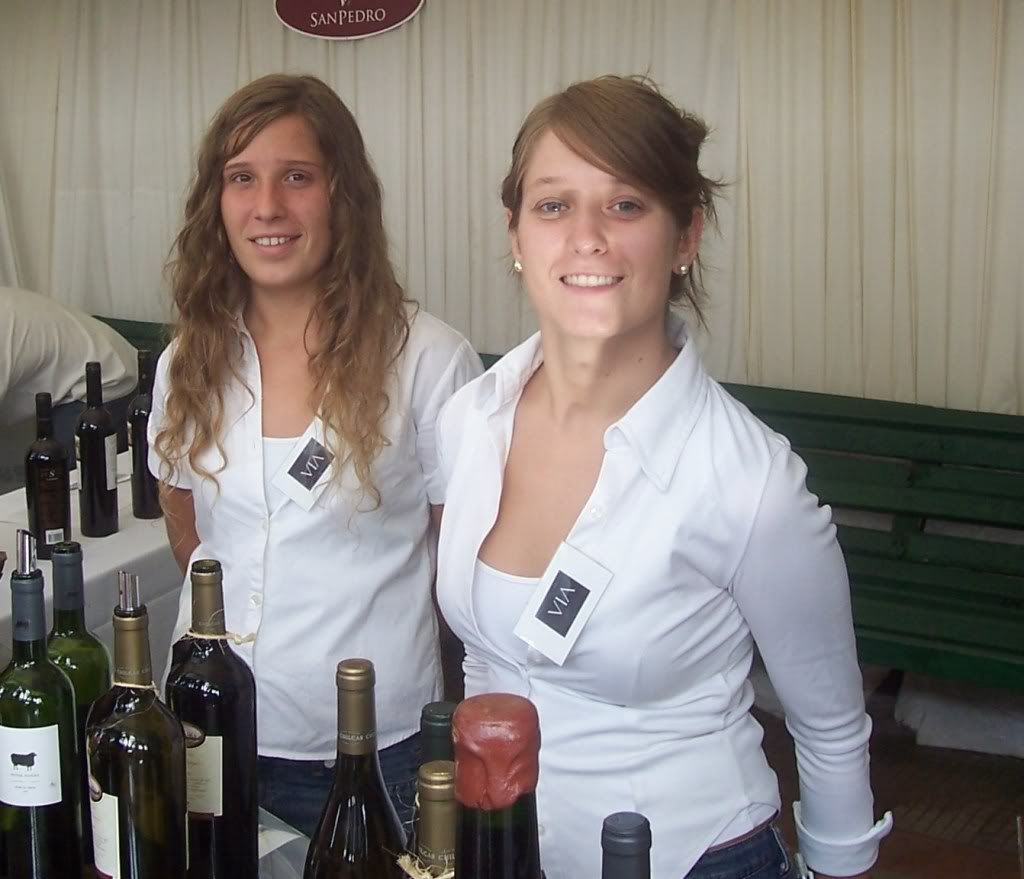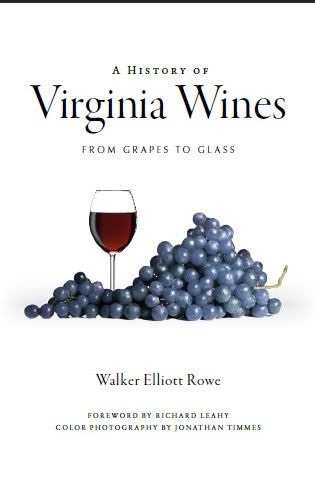Monty Waldin in his book “Biodynamic Wines” quotes the French soil scientist Claude Bourguignon who said he found more microbiological life in the soils of the Sahara Desert than those found in the vineyards of Burgundy. Mr. Waldin writes, “ Decades of weed killers and potassium-rich fertilizers had turned Burgundy’s soils from being as friable as couscous and rich in microbial life into sterile hard-pans resembling concrete.”
Ed Boyce and his wife Sarah O'Herron had this in mind when they decided to plant 22 acres of grapes on their Black Ankle Vineyards just east of Frederick, Maryland. They envisioned that their vineyard would be a paragon of organic and biodynamic farming. But Japanese Beetles and black rot fungus have waylaid their plans to grow grapes organically. As for biodynamics—that is still a possibility.
Lots of people are familiar with the term “organic”. As it relates to farming it means that vegetables, fruit, and even livestock are raised without the use of chemical fungicides, herbicides, and pesticides; genetically-engineered plant material; or growth hormones. But fewer people are familiar with the concept of “biodynamic” farming. As Ed Boyce points out his vineyard could still be labeled “organic” under the law but he could erect a chemical factory on his property. Not so with biodynamic farming because the entire farm is supposed to be viewed as one living organism and not just the crops.
Biodynamic farming is a bit difficult to grasp to the uninitiated. Mr. Waldin says empirical evidence suggests that biodynamic farming does indeed produce superior wine grapes. Still, skeptics might tend to dismiss this blend of agriculture and philosophy as some kind of mysticism.
Monty Waldin explains that biodynamic farming grew out of the work of the Austrian philosopher Rudolf Steiner. Steiner lived among the peasants “whose feudal way of life had remained unchanged for centuries”. Steiner, “felt a connection with the natural world around him but also with an unseen spiritual world that lay behind it, which he felt he a need to explain or codify in some way.”
In 1924 Austrian farmers were complaining “seed fertility and crop and animal health were rapidly declining due to the destructive effects of ‘scientific farming’.” Steiner’s organized a series of lectures that presented the farmers with a specific list of compost and teas with which they could spray onto their plants and spread onto the soil. This promised to reinvigorate the soils with bacteria and earth worms, reign in fungal problems, and control excess vigor. Further Steiner and his subsequent followers set forth a schedule based upon the movements of the planets, moon, and stars that would promote deep growing roots and healthy flowers and fruit.
For those who mock the notion that the planets could have anything to do with growing wine grapes, the author Monty Waldin cites that the ancient Greek poet Hesiod “stipulated that wine be made according to a sign from the sky”. Further Johannes Kepler, who discovered that the sun’s orbit was elliptical, published an agricultural almanac. Waldin cites these examples as proof that the celestial calendar can indeed affect plant growth.
In Virginia there is an organization called The Josephine Porter Institute that is wholly devoted to biodynamic farming and makes the compost and plant preparations called for Rudolf Steiner and his followers. The grow and then process the stinging nettle, chamomile, dandelion, and silica preparations called for by biodynamics.
What makes Biodynamics a bit difficult to believe is these formulations are applied to compost in such tiny proportions that you would think they could not make any difference. Standing at the Black Ankle Vineyards--where hundreds of tons of cow and horse manure lie decomposing--Ed Boyce says the situation is analogous to yeast. Only a few grams of yeast can ferment thousand of gallons of wine—but yeast of course reproduce while, say, silica does not. So how could 1 gram of oak bark—which is supposed to add calcium to the soil—added to 15 tonnes of metric compost possible make any difference? And how exactly does silica, which is buried in a cow’s horn for the winter, channel the suns energy into plants?
The situation with teas is more plausible. A “tea” is made by boiling a plant and then spraying the resulting solution onto the growing plants. Horsetail, for one, is a plant that is supposed to contain 70% silica. Sprayed onto the vines it is supposed to control fungus when applied at the rate of 100 grams per hectare. Ed says those critics who cast a spurious eye at this formulation would not even question the application rate of the systemic chemical fungicide Pristine, which is applied at the rate of 10.5 ounces per acre. Of course even that small amount is many times the rate of application of biodynamic horsetail.
Prior to planting their large vineyard, Ed and Sarah sought out the advice of the viticulturists Wayne Wilcox of Cornell and Tony Wolf of Virginia Tech. Both men said that Black Ankle Vineyards might be able to grow grapes organically but that the black rot fungus would be a problem since there is no organic formulation to stop that problem.
Organic farming works in rain-free farming regions like California and Chile where downy mildew and black rot funguses are not a problem. But in Europe and the Eastern USA there is downy mildew and black rot. Downy mildew is controlled by copper sulphate and copper hydroxide —which are classified as “organic” under European and American law. But there is no organic formulation that controls black rot. Those of you who grow roses are familiar with this, because it makes the leaves on roses turn yellow and covers them with black spots. For grape vines brown lesions appear on the leaves. For the fruit the results are worse—the grapes dry out completely and turn rock hard. Several winemakers told me that you might be able to make drinkable white wine from black-rot infected grapes since the juice is simple gone. But red wine would be more problematic since the skins are used in the wine making process so it might make the wine bitter. As for Ed and Sarah, their vineyard is 60% infected with this malady so in order to avoid a total loss they had to abandon organic farming and spray conventional sprays until some solution can be found. Still they will continue to use biodynamic formulations while using the organic compounds sulfur to control powdery mildew (a problem the world over) and copper.
Japanese Beetles were another problem for Black Ankle Vineyards. Ed says some of vines had been completely defoliated. Again, for those of you who grow roses you know what these creatures do to lovely rose petals—they devour them wholesale. The problem in the vineyard is they descend on the leaves by the millions. A grapevine without leaves cannot ripen fruit nor can it survive the winter. Ed and Sarah tried various organic treatments but nothing worked so they used the non-organic chemical Sevin, which is widely used by vineyards and home gardeners.
Ed and Sarah do not mind that this article singles out problems in their vineyard. They want to highlight this concern for other farmers no doubt are looking for ways to farm organically here in the East. Meanwhile Ed and Sarah will continue to spray stinging nettle, cow manure buried in cow horns, chamomile aged in cow intestines, silica, and horsetail. They will also plant new vines and prune old ones according to the celestial calendar on what Ed calls “fruit and flower” days. Look for their winery and tasting room to open in 2007.
Historical Significance
In 1853, Commodore Matthew Perry sailed his fleet to Japan. In an effort that continues today, Perry’s trip was America’s initial attempt to pry open the Japanese market. Perry negotiated the first commerce treaty between Japan and the Untied States. In 1860, a Japanese delegation came to Washington and the Willard Hotel to sign the new treaty. One member of the delegation wrote, “The house of the Secretary of State is not as fine as the hotel.”
These foreign guests caused great excitement in the District of Columbia. Great throngs of tourists, journalists, and the curious lined the street to watch the sword-carrying Japanese delegation in their brightly colored costumes and close-cropped hair. It was the first trip aboard by an official group of Japanese to a foreign destination.
The Japanese did not use pillows but preferred a block of wood. One Japanese official could not find his block of wood, so he used a white ceramic bowl instead. In the morning, the stewards were shocked to see the Japanese sleeping with his head on a chamber pot.
The Willard has also witnessed war. In 1859, Jefferson Davis, soon-to-be president of the Confederacy, attended a party at the hotel with 1,800 guests. Garnett Laidlaw Eskew, in his book Willard’s of Washington, writes this was the last party attended by Northern and Southern leaders before the American Civil War broke out. Later the hotel was the site of the Peace Conference from February 4 to 27, 1861. Delegates from 21 of the 34 states met in a last desperate attempt to avoid the Civil War. A plaque from the Virginia Civil War Commission, on the Pennsylvania Avenue façade of the hotel, pays tribute to this courageous effort.
Most American children know by hear the lines, “mine eyes have seen the glory of the coming of the Lord,” from “The Battle Hymn of the Republic.” In 1861, Julia Ward Howe, playwright, poet, and essayist, wrote the words to this anthem on Willard Hotel stationary. Ward wrote as she looked down from her window upon marching union troops who were singing a tune upon which this anthem is based. Julia sold the anthem text to the Atlantic Monthly magazine for ten dollars.
Notable Guests
When Charles Dickens made a voyage to the Untied States in 1842, he stayed at the Willard Hotel. This Englishman thought little of American culture and even less of the capitol city. He mockingly called Washington “The City of Magnificent Intentions” instead of its renowned title, “The City of Magnificent Distances.” From his hotel window, he could see dogs frolicking in the dirt, pigs rolling about the courtyard, and the Capitol and the Washington monument both halfway finished.
According to Smithsonian magazine, when Mark Twain stayed there he promenaded about, accompanied “by a horde of twittering females.” Statesman and orator Henry Clay mixed the first mint julep in Washington in the Willard’s Round Robin Bar.
The Willard also played host to these famous guests: Emily Dickinson, Jenny Lind, P.T. Barnum, Walt Whitman, Tom Thumb, Samuel Morse, the Duke of Windsor, Flo Ziegfield, Harry Houdini, the Barrymores, Mae West, Gloria Swanson and Gypsy Rose Lee.
The Willard family sold their interest in the hotel in 1946. The hotel continued to operate until July 1968 when its doors were closed. The renovated Willard Inter-Continental Hotel opened in 1986 after the building lay empty for 18 years.
This article originally appeared in Pest Management magazine.
Tuesday, April 22, 2008
Subscribe to:
Post Comments (Atom)






No comments:
Post a Comment